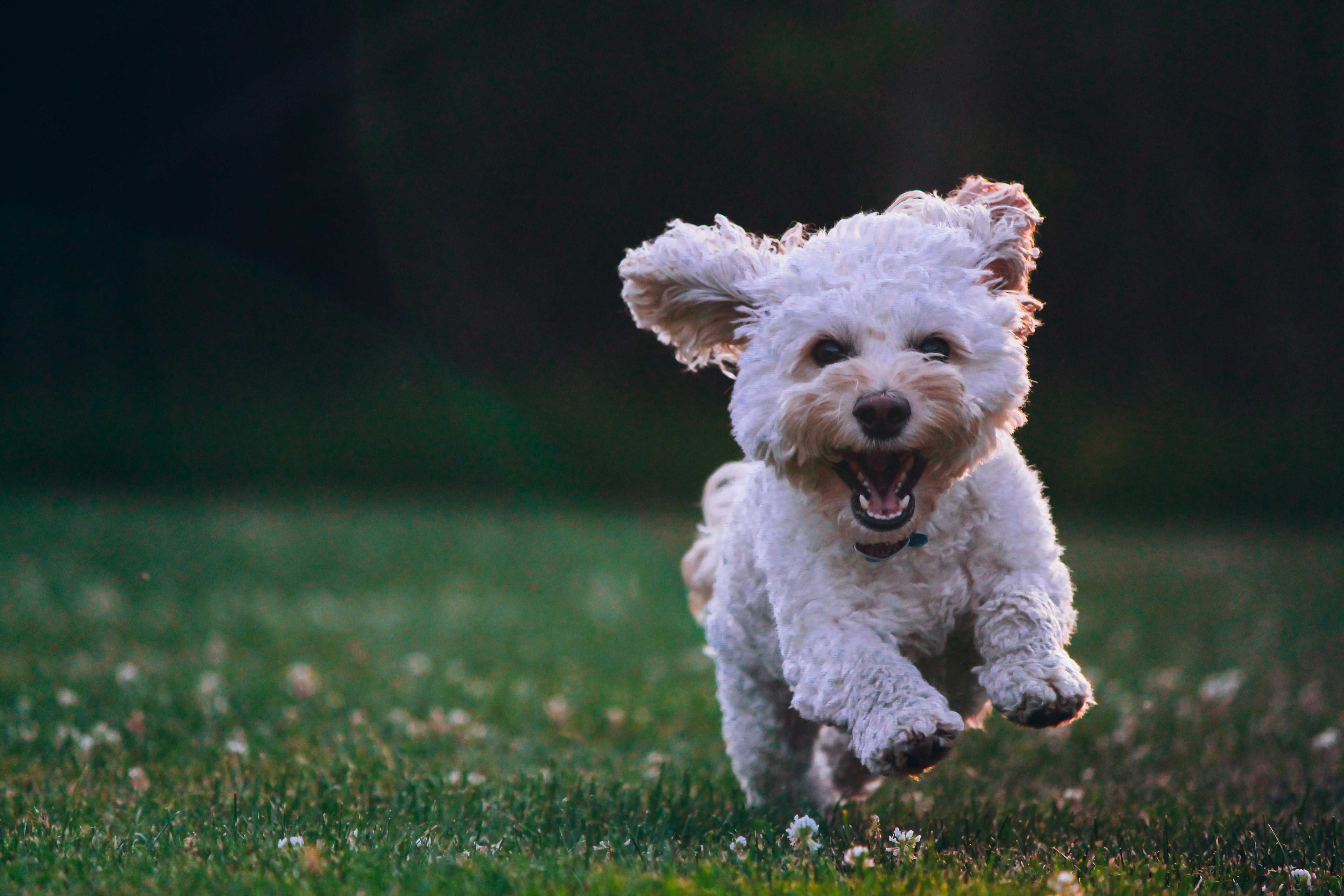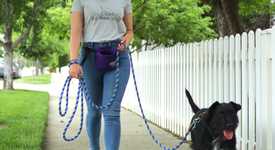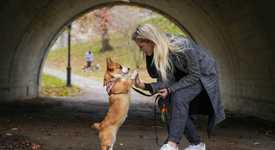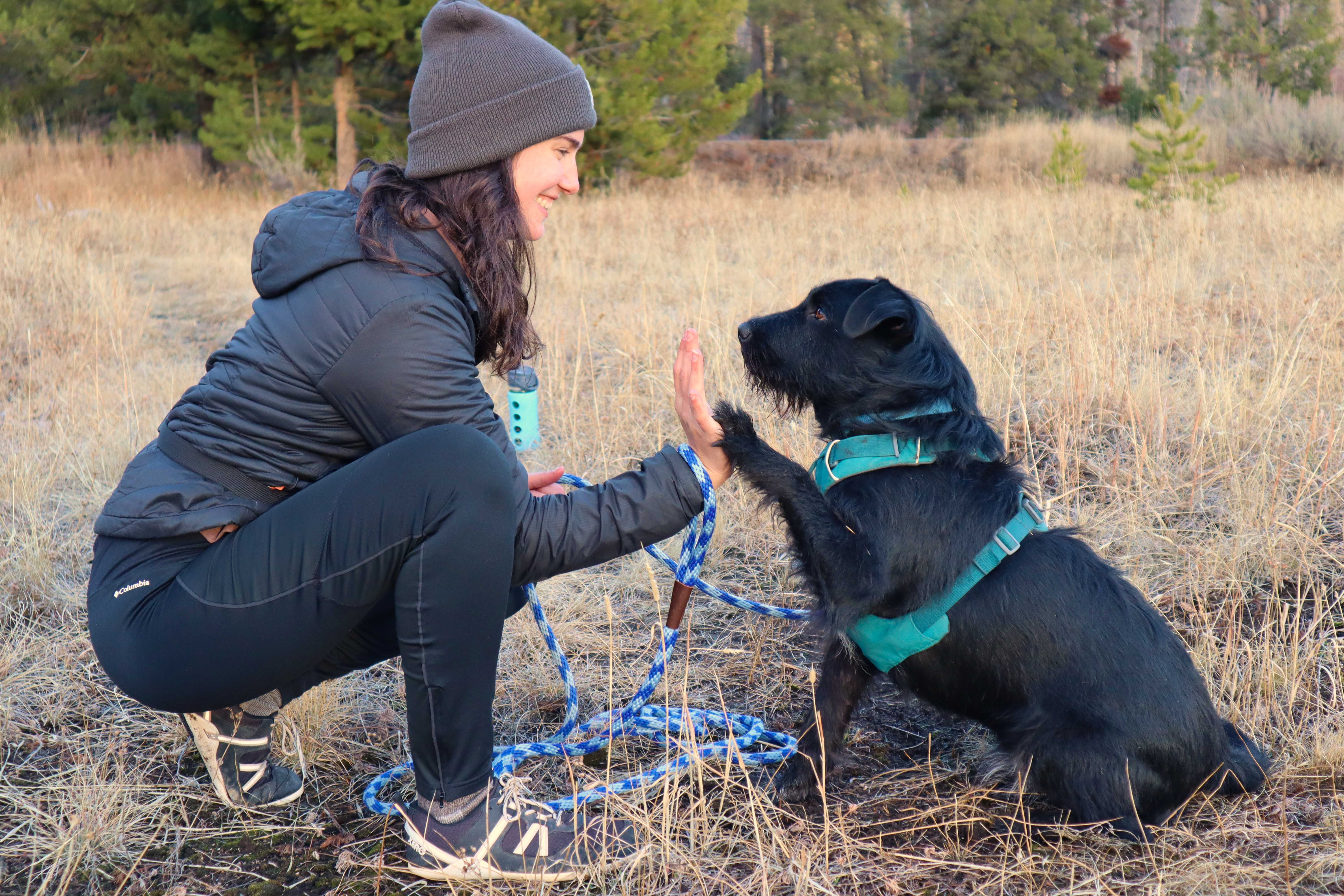
Unlock 10 Expert Puppy Training Tips!
Sign up with your email and receive a free video guide to transform your puppy into a well-behaved companion
There are so many negative stereotypes around muzzles: that they’re abusive, scary, or only for very aggressive dogs. That couldn’t be farther from the truth.
Muzzles are actually a great management tool to keep dogs and people safe.
Of course, it’s possible to use muzzles as an aversive tool, but if you’re reading this post then I imagine you’re ready to muzzle train your dog the correct, humane way.
In this comprehensive guide, we'll delve into the world of muzzle training, demystifying its purpose and helping you muzzle train your dog the correct way.
So, let’s dive right in.
Why is Muzzle Training Important?
First and foremost, muzzle training is an important safety tool. All dogs are capable of biting under the “right” circumstances, which is why all dogs should be muzzle trained. For example, a dog experiencing pain could bite, even if they’ve never shown a propensity for biting in the past.
That said, there are dogs who are more likely to bite than others. If your dog has ever shown aggressive behaviors—such as air snapping—at people or other dogs then that is most certainly a sign that you need to start muzzle training them. Fearful, reactive, or dogs who have displayed resource guarding should also be muzzle trained.
Many of my clients have resisted muzzle training because they (rightfully) avoid situations that may cause their dog to bite. Any good behavioral modification plan requires that you avoid stressful, scary, or triggering situations for your dog until they’re ready to handle them. But sometimes you don’t have a choice.
You will probably have to introduce your dog who’s nervous of strangers to a veterinarian, dog trainer, dog sitter, or even a member of your family. You will probably want to take your dog-reactive dog on walks and, depending on where you live, this may mean encountering many “don’t worry, he’s friendly!” off leash dogs running up to you (a rant for a different blog post). Or say the fire alarm in your apartment building goes off and you have to gather outside with all of your neighbors, children, dogs, and cats, which may be overwhelming to your fearful pup. You get the idea. Life is full of the unexpected.
Not only will a muzzle help prevent a bite from occurring, but the muzzle can also give you peace-of-mind.
Take my dog. Last year, a friend visited with their six-month-old baby. I didn’t know how my dog would react to a baby. So, I muzzled him in the baby’s presence. He seemed unfazed by the baby, but his muzzle meant I didn’t have to worry.
Peace-of-mind aside, muzzles also warn people away from your dog, so you're less likely to have children or people—with or without their own dog—running up to you on your walks. That’s a huge win if your dog isn’t so good with people or other dogs.
Of course, muzzles are only a management tool. They do not replace proper behavioral training. And you should never purposefully put your dog in a situation that would overwhelm or scare them just because they have a muzzle on.
Beyond safety, muzzles can also be a great tool for dogs who eat what they shouldn’t. Say your dog eats rocks or the garbage that somehow is always strewn about neighborhood streets (I didn’t realize how many chicken bones were out there until getting my dog). While you work on the rock eating from the veterinary and training side of things, a muzzle can act as an invaluable management tool in the meantime.
Dogs may also need to be muzzled in certain situations, such as some training classes, emergent vet care, or grooming services. Muzzle training ahead of time can ensure that the muzzle doesn’t add stress to your dog in an already stressful situation.
Can you use Muzzles to Prevent Barking?
Before we get into training, I want to address this common question. The answer is no, muzzles are not appropriate for preventing your dog from barking. If you do this, you are punishing your dog by forcibly closing their snout.
I get it—barking is annoying. But there are other, far more effective ways to stop your dog from barking without risking the fallout that may arise from the use of punishment-based training. Dogs bark for many different reasons, from boredom to fear to seeking attention. It’s important to uncover the reason your dog barks and address the root cause instead of attempting to mask the problem. For example, if your dog barks out of boredom, try increasing their daily enrichment.
When to Muzzle Train a Dog
The ideal time to muzzle train your dog is before they are put in a situation where they need to wear a muzzle. Muzzles can compound a dog’s stress levels if not appropriately trained, which can decrease safety and potentially increase negative emotions toward the situation they’re in. For example, a dog who’s reactive toward other dogs will likely become more reactive if forced to wear a muzzle around other dogs, if that muzzle hasn’t been properly trained.
This means you should start muzzle training, well, now.
I always recommend that my puppy clients muzzle train their dogs because it’s a good tool to have in your back pocket. But a dog can be muzzle trained at any age, including older dogs. Yes, you can teach an old dog new tricks.
How Long Does it Take to Muzzle Train a Dog
Every dog and situation is different, so it’s impossible to say. It all depends on your dog’s personality, your training skill, how often and consistently you train, and whether or not your dog has had a prior negative experience or experiences with a muzzle.
A good rule of thumb is that it will likely take you a good month to properly muzzle train your dog at the very least, more likely a few months if you train only at a somewhat consistent level.
It took my dog a few months to get accustomed to his muzzle. Now that he likes his muzzle, I still bring it out for a training session now and again to keep his feelings toward it positive.
The Best Muzzles for Dogs
It’s important to use a basket muzzle. A basket muzzle will allow your dog to drink, take treats, and pant so they don’t get overheated.
Grooming muzzles do not allow for this. They’re okay for very short periods of time, but not recommended for any duration as they could seriously harm your dog.
Here are my favorite muzzles:
How to Muzzle Train a Dog
The goal with muzzle training is to make your dog want to wear the muzzle! You never want to force the muzzle on your dog’s snout. That will make them have negative associations with their muzzle, which is tough to recover from.
Remember, muzzles are frequently used in already-stressful situations for your dog. You don’t want to add to that stress. Fearful and reactive dogs are already living in a scary world (by their account). Forcing a muzzle on them will only increase that fear, which may make their fear or reactivity worse.
So, take it slow when introducing the muzzle and make it positive.
How to Introduce the Muzzle to Your Dog (Start with Classical Conditioning)
Before we start asking our dogs to willingly stick their snouts into a muzzle, we need to make them like their muzzle. We do this by associating it with really good things.
The process is simple.
- Show your dog the muzzle
- Shower your dog with treats, perhaps telling them that they’re the bestest-dog-in-the-whole-wide-world while you’re at it. (Try not to touch your dog during this game, as most dogs don’t love being touched as they eat.)
- Put away the muzzle and stop the treat party
- Go about your life
- Repeat randomly over the course of a week or so
That’s it. Your dog doesn’t need to do anything other than notice the muzzle and enjoy lapping up lots of delicious treats.
All we’re doing in this stage is associating the muzzle with a good time. You should start to see your dog anticipate the treats whenever you grab their muzzle. Look for happy, loose body language.
You need to ensure that you are presenting the muzzle before the food. (Otherwise, the association won’t be made.)
Once your dog starts looking excited the moment you bring out the muzzle, it’s time for the next step of teaching them to love having their muzzle strapped around their neck. Here’s how:
- Warm up with the previous game of muzzle=treat party
- Put some food on the ground. While your dog is eating the food, gently and loosely clip your dog’s muzzle around their neck (note that their mouth is not in the muzzle at this stage. It’s hanging around their neck like a bulky necklace).
- Throw a treat party
- Unclip the muzzle and stop the party
- Go about your life
- Repeat at random intervals until your dog looks as excited to have a muzzle around their neck as you are when you see a plate of gooey brownies (or maybe that’s just me)
If your dog ever looks stressed—with stiff body language, whale eyes, backing away—then go back to the previous step.
Make Your Dog a Muzzle-icle
A great way to help your dog see their muzzle as the best-thing-ever and super charge the classical conditioning process is by turning it into a muzzle-icle. (I can’t take credit for this genius invention and name. That goes to the illustrious Grisha Stewart.)
You wrap aluminum foil around the basket of the muzzle, smear peanut butter inside, freeze it, peel off the foil and give it to your dog. At first you can leave the straps unbuckled. Later on, as your dog gets used to the muzzle, you can buckle them in.
How to Teach your Dog to Wear Their Muzzle
Alright, it’s time to ask your dog to do stuff. At this point in the process, we can go ahead and teach our dogs to willingly and happily put their snout in their muzzle.
In this process, you can use a clicker or the word “yes!” You click or say “yes!” whenever your dog performs the behavior correctly and then you give them a treat. (Read more about positive reinforcement training here.)
Step 1: Hold the muzzle in front of your dog’s nose. The moment they interact with it in any way, perhaps by looking at it, sniffing it, moving toward it, or otherwise touching it, click or say “yes” and give them a treat. Repeat 10-15 times before ending the training session.
Next, hold the muzzle in front of your dog’s nose. Wait until they touch the muzzle with their nose before you say “yes!” and give them a treat. Repeat this step until your dog reliably touches the muzzle with their nose every time you present it.
Troubleshooting: Most dogs will reliably target the muzzle with their nose using this technique. If your dog will not, you can lure your dog toward the muzzle using a treat. Once they’ve touched the muzzle, say “yes!” and give them that treat.
Step 2: Hold the muzzle in front of your dog’s nose, positioning it so your dog can easily put their snout in it. Wait for them to put their nose into the basket. The moment they do, say “yes!” (or click) and treat. Repeat this step until your dog reliably puts their snout in the muzzle.
Troubleshooting: Again, most dogs will offer this behavior if you’ve worked on steps one and two consistently. If needed, you can use a food lure by holding a treat on the outside of the muzzle, requiring your dog to put their snout in the muzzle to get the treat. Drop the lure after 5-10 repetitions.
Step 3: It’s time to start building duration. Instead of saying “yes!” and treating your dog the moment they stick their snout in the muzzle, delay the “yes!” for one second. Then two seconds, three seconds, and so on.
As you work your way up, pingpong between short durations (1 to 3 seconds) and longer durations (10 + seconds), so you’re not asking your dog to do something increasingly difficult with every repetition. Remember those multiplication quizzes we did in elementary school? I don’t know about you, but I felt so relieved whenever an easy 2 x 2 was thrown in amongst the 7 x 6’s. Dogs appreciate those gimmies too.
And be sure that you are varying the duration. Humans are all too good at accidentally asking for the same duration in every repetition. This will teach your dog to keep their nose in their muzzle for say 5 seconds, no shorter or longer.
Work on duration until your dog can easily hold their snout in their muzzle for 20 seconds.
Step 4: Once you’ve built up duration, you can start working on making your dog feel comfortable with the straps. Present the muzzle. Once your dog sticks their snout in it, play with the straps. Say “yes!” and give them a treat. Eventually, work your way up to wrapping them around your dog’s neck before you say “yes!” and treat. Then fully put them on, buckle them, and increase duration with them on.
If your dog looks uncomfortable at any point in this process, back up and go slower. You can’t take this process too slowly, but it’s all too easy to take it too quickly.
Step 6: While your dog is wearing their muzzle (straps on) give them spray peanut butter or spray cheese through the muzzle. This is especially powerful if they otherwise never have spray cheese or peanut butter. This step really helped my dog to LOVE his muzzle.
Step 7: Keep the love alive. If you only muzzle your dog during stressful situations they will start to associate their muzzle with stressful situations. (If you were only to drink milkshakes while getting a painful shot at the doctor’s, I imagine you might start to hate milkshakes, regardless of how much you loved them previously.) So, bring out the muzzle during cuddle time on the couch, on fun walks, while playing or training, and continue to associate it with good things.
At the end of the day, you want your dog to think “OMG, is that a muzzle I see!? I hope my owner puts it on me because it always means that good times are coming!”
Conclusion
In a nutshell, muzzle training is a game-changer for dogs and their people. By taking it slow, using positive reinforcement, and making it a positive experience, we're not just keeping everyone safe but also ensuring our dogs don’t feel additional, unnecessary stress. Forget any stigma – muzzles are like a superhero cape for nervous or reactive dogs, giving them the freedom to explore the world safely.













